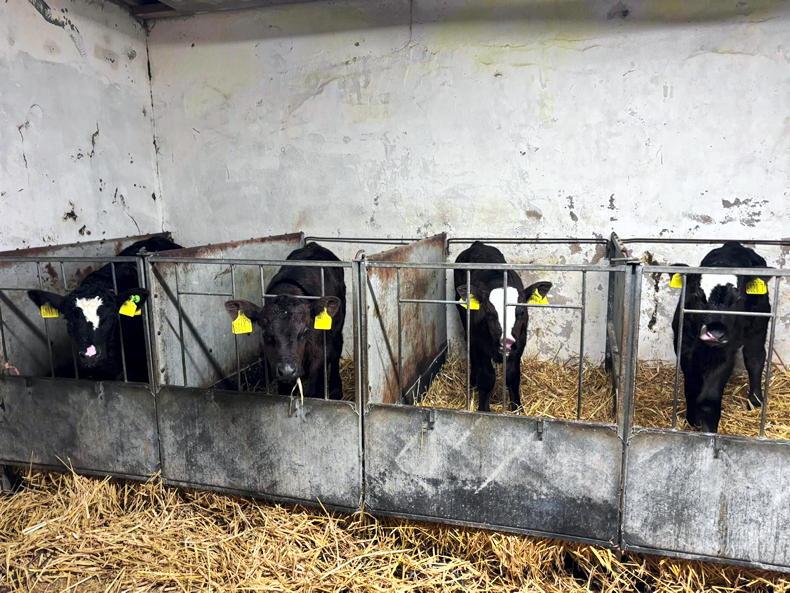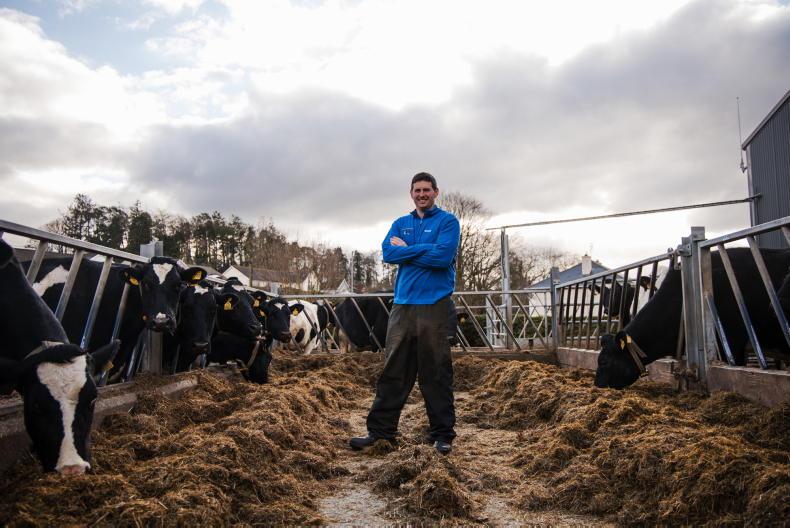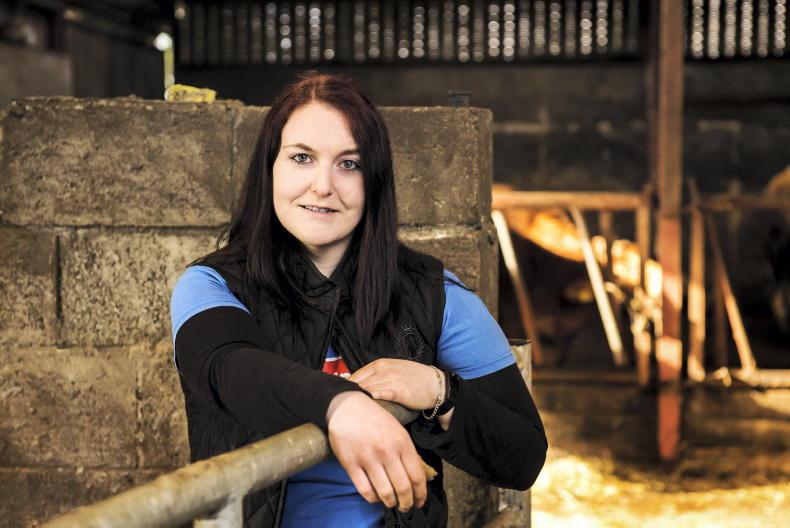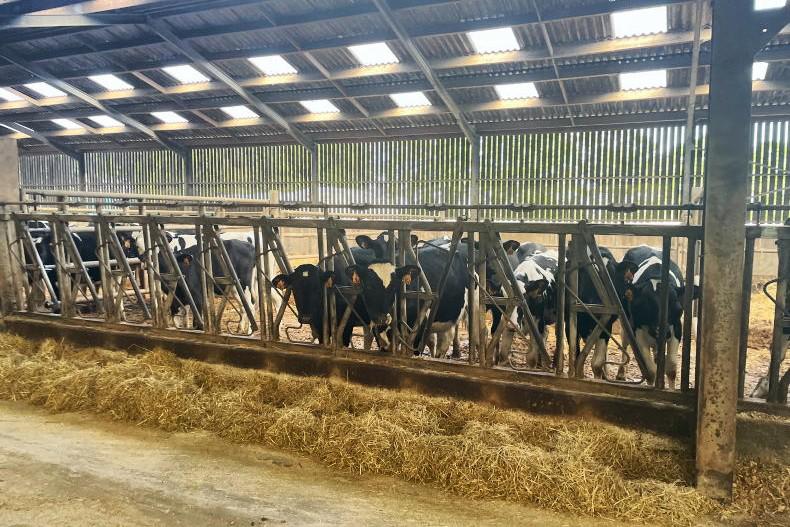Torrential thunderstorms across the country led to flash flooding in some areas, with Tullow receiving 40mm of rain in one hour. Many farmers are reporting to have received less than this for the entire month of July.
This is more akin to the thunderstorms and deluges that would be seen in Australia or America after sustained drought periods.
In any case, parched soil receiving so much rain in such a short period of time is of much less use than gradual ‘soft’ rain that we are more accustomed to.
In general, thunderstorms like we saw in the past week will run off the rock-solid ground, meaning paddocks that received inches of rain can still effectively be in a soil moisture deficit.
Thankfully, we should see more steady showers of rain in the coming days, with between 20mm-42mm forecast for the next week.
However, where average farm cover has dipped below 550kg/ha, the return to normal grazing will be slower.
A simple way to view grass is to view leaf area as a mini solar panel; the more leaf area you have, the more solar panels you have collecting energy and driving growth in the plant.
Having the bulk of your paddocks below 700-800 kg/DM/ha will take longer for growth levels to recover, so supplementation through silage, concentrates or zero-grazed grass may have to be continued for the foreseeable.
Where fertiliser hasn’t been spread due to the prolonged dry period, now is a good time to spread some N across the farm.
Trials by Teagasc measured grass growth per kg of N spread in August, September and October. Every kg N applied gave a response of 27kg for August, 19kg for September and 10kg for October.
Spreading fertiliser now as opposed to waiting until before the deadline will mean better utilisation and value for money. Care should be taken where fertiliser was spread and no growth occurred.
Nitrogen could be sitting in soil awaiting growth conditions, with cases of nitrogen poisoning reported back in 2018 when we last had a serious drought similar to now.
Spread nitrogen in paddocks that have not received an application recently at a rate of 30 units/acre to try to boost growth and build covers.Spread dairy washings or watery slurry on overcast, damp days at low rates on clover swards.Good cleanouts should be achieved with dry conditions. Cows are content grazing out paddocks in good conditions, but where swards are stemmy pre-mow as opposed to top to quicken regrowths.Continue supplementing stock to try to build covers where required. Grazing too light covers now will result in lower growth overall. Remember, grass grows grass.Barry Reilly – Teagasc Ballyhaise, Co Cavan
The farm is well ahead of target in preparation for building autumn covers. With the heavy nature of the ground here compared to other parts of the country, the dry spell favoured rather than hampered growth, with cows content in the warm settled weather.
We will continue to mow and bale surplus paddocks as required, with our target pre-grazing yield being 1,400kg/DM/ha.
Clover content is excellent in the paddocks. To date we have spread only 90kg of chemical N and we have just over 9t DM/ha grown on average. We will be topping up some of the farm with 20 units of K this week.
Stocking rate (cows/ha) 2.3
Growth rate (kg/day) 60
Average farm cover (kg/cow) 280
Yield (l/cow) 21.6
Fat % 4.32
Protein% 3.81
Milk solids (kg/cow) 1.8
Supplement fed (kg/cow/day) 2
Dan McCarthy – Skibereen, Co Cork
We got no rain at all the past week, unfortunately. Growth has dropped from 60kg two weeks ago, back to 35kg and we’re now looking at 27kg of growth.
Cows are being supplemented with 4kg of meal as well as four bales of silage per day among 150 cows.
We are in the lucky position that we got cows out early in the spring so we had a good bulk of silage left over.
We sow sugar beet each year and generally graze it from the third week in September.
This year I planted an additional few acres, and we will likely start grazing this from the start of September.
Stocking rate (cows/ha) 3.49
Growth rate (kg/day) 27
Average farm cover (kg/cow) 146
Yield (l/cow) 18.75
Fat % 4.65
Protein% 3.75
Milk solids (kg/cow) 1.62
Supplement fed (kg/cow/day) 4
Sean O’Donnell – Ballina, Co Mayo
We’ve gotten next to no rain since the weather broke. Although growth is still good, we are at a farm cover of 720kg DM/ha whereas we would prefer that to be at 800kg at this stage of the year as we look to build grass.
If rain comes this week, it should correct itself. If not we will go in with some silage next week.
We’ve spread 30 units/acre of protected urea on both farms.
The home milking block has had 30% of it reseeded this year; 20% in spring and 10% in July. The July reseeds are being sprayed this week and will be grazed next week.
Stocking rate (cows/ha) 3.2
Growth rate (kg/day) 64
Average farm cover (kg/cow) 225
Yield (l/cow) 19.5
Fat % 4.85
Protein% 3.91
Milk solids (kg/cow) 1.75
Supplement fed (kg/cow/day) 1.5
Torrential thunderstorms across the country led to flash flooding in some areas, with Tullow receiving 40mm of rain in one hour. Many farmers are reporting to have received less than this for the entire month of July.
This is more akin to the thunderstorms and deluges that would be seen in Australia or America after sustained drought periods.
In any case, parched soil receiving so much rain in such a short period of time is of much less use than gradual ‘soft’ rain that we are more accustomed to.
In general, thunderstorms like we saw in the past week will run off the rock-solid ground, meaning paddocks that received inches of rain can still effectively be in a soil moisture deficit.
Thankfully, we should see more steady showers of rain in the coming days, with between 20mm-42mm forecast for the next week.
However, where average farm cover has dipped below 550kg/ha, the return to normal grazing will be slower.
A simple way to view grass is to view leaf area as a mini solar panel; the more leaf area you have, the more solar panels you have collecting energy and driving growth in the plant.
Having the bulk of your paddocks below 700-800 kg/DM/ha will take longer for growth levels to recover, so supplementation through silage, concentrates or zero-grazed grass may have to be continued for the foreseeable.
Where fertiliser hasn’t been spread due to the prolonged dry period, now is a good time to spread some N across the farm.
Trials by Teagasc measured grass growth per kg of N spread in August, September and October. Every kg N applied gave a response of 27kg for August, 19kg for September and 10kg for October.
Spreading fertiliser now as opposed to waiting until before the deadline will mean better utilisation and value for money. Care should be taken where fertiliser was spread and no growth occurred.
Nitrogen could be sitting in soil awaiting growth conditions, with cases of nitrogen poisoning reported back in 2018 when we last had a serious drought similar to now.
Spread nitrogen in paddocks that have not received an application recently at a rate of 30 units/acre to try to boost growth and build covers.Spread dairy washings or watery slurry on overcast, damp days at low rates on clover swards.Good cleanouts should be achieved with dry conditions. Cows are content grazing out paddocks in good conditions, but where swards are stemmy pre-mow as opposed to top to quicken regrowths.Continue supplementing stock to try to build covers where required. Grazing too light covers now will result in lower growth overall. Remember, grass grows grass.Barry Reilly – Teagasc Ballyhaise, Co Cavan
The farm is well ahead of target in preparation for building autumn covers. With the heavy nature of the ground here compared to other parts of the country, the dry spell favoured rather than hampered growth, with cows content in the warm settled weather.
We will continue to mow and bale surplus paddocks as required, with our target pre-grazing yield being 1,400kg/DM/ha.
Clover content is excellent in the paddocks. To date we have spread only 90kg of chemical N and we have just over 9t DM/ha grown on average. We will be topping up some of the farm with 20 units of K this week.
Stocking rate (cows/ha) 2.3
Growth rate (kg/day) 60
Average farm cover (kg/cow) 280
Yield (l/cow) 21.6
Fat % 4.32
Protein% 3.81
Milk solids (kg/cow) 1.8
Supplement fed (kg/cow/day) 2
Dan McCarthy – Skibereen, Co Cork
We got no rain at all the past week, unfortunately. Growth has dropped from 60kg two weeks ago, back to 35kg and we’re now looking at 27kg of growth.
Cows are being supplemented with 4kg of meal as well as four bales of silage per day among 150 cows.
We are in the lucky position that we got cows out early in the spring so we had a good bulk of silage left over.
We sow sugar beet each year and generally graze it from the third week in September.
This year I planted an additional few acres, and we will likely start grazing this from the start of September.
Stocking rate (cows/ha) 3.49
Growth rate (kg/day) 27
Average farm cover (kg/cow) 146
Yield (l/cow) 18.75
Fat % 4.65
Protein% 3.75
Milk solids (kg/cow) 1.62
Supplement fed (kg/cow/day) 4
Sean O’Donnell – Ballina, Co Mayo
We’ve gotten next to no rain since the weather broke. Although growth is still good, we are at a farm cover of 720kg DM/ha whereas we would prefer that to be at 800kg at this stage of the year as we look to build grass.
If rain comes this week, it should correct itself. If not we will go in with some silage next week.
We’ve spread 30 units/acre of protected urea on both farms.
The home milking block has had 30% of it reseeded this year; 20% in spring and 10% in July. The July reseeds are being sprayed this week and will be grazed next week.
Stocking rate (cows/ha) 3.2
Growth rate (kg/day) 64
Average farm cover (kg/cow) 225
Yield (l/cow) 19.5
Fat % 4.85
Protein% 3.91
Milk solids (kg/cow) 1.75
Supplement fed (kg/cow/day) 1.5










SHARING OPTIONS